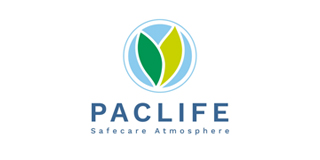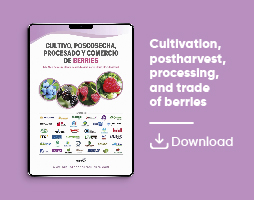

Paclife
Packaging
Recommendations for Maritime Transport with Modified Atmosphere Packaging
Paclife provides a series of recommendations for the maritime transport of fruits using their modified atmosphere packaging

The fruit season in Latin America is about to begin, with cherries, blueberries, peaches, and grapes taking center stage. This year, several factors have significantly impacted their quality and arrival at key markets, emphasizing the need for detailed export management.
The El Niño weather patterns, bringing intense rains during spring and particularly during early harvests, present considerable challenges. Preventing fungi and rot becomes a priority, involving soil studies to optimize irrigation and a strategic application of fungicides. In the hydrocooler cooling process, especially relevant for fruits like cherries, adjusting doses and active ingredients is crucial. These measures are intended to preserve fruit quality and ensure its integrity upon arrival, making the difference between a valuable product and a loss.
Considering the above, PACLIFE offers essential recommendations for the international transport of fruits and vegetables, crucial to ensuring product quality in remote destinations such as Asia and Europe.
Recommendations for Maritime Transit Using Paclife Modified Atmosphere Packaging
- To prevent dehydration due to long waiting periods of over 24 hours, the use of macro-perforated Paclife covers is recommended. These covers help reduce vapor pressure deficit.
- If macro-perforated covers are used, it is advised to place them after a cooling process. It is preferable to keep the plastic material in the cooling chamber for approximately 24 to 48 hours before use.
- Selecting the appropriate packaging according to the destination market's restrictions is crucial.
- After the packing process, pre-cooling with forced air is recommended until reaching the optimal pulp temperature, specific to each species. This process should be done as quickly as possible to prevent dehydration and condensation, maintaining packing temperatures within the optimal ranges for each product type.
- It is crucial to maintain the chamber environment where the finished product is stored at temperature ranges similar to the pulp to avoid fluctuations that may cause increases in fruit temperature and dew points.
- Dispatching the product as soon as possible is recommended to avoid storing the fruit for more than 48 hours after processing is completed.
- It is essential to verify and adjust the pulp temperature according to the species before dispatching, following the exporter's established protocol and specific recommendations for each type of fruit. PacLife provides a protocol of recommendations before the start of each season.
- Regarding container ventilation or air exchange, ventilation should be considered based on the technology used.
- When using PacLife's modified atmosphere packaging, it is crucial always to maintain the lamp opening. The range of CBM or % units will depend on the species being exported and the shipping company.
- To ensure proper preservation with Modified Atmosphere Packaging (MAP) technology, allowing a gas exchange that guarantees the expected results is crucial, especially for fresh fruits.
- Keeping the lamp closed is a critical process where gas ventilation within the container is not allowed. This leads to the slow but constant consumption of the present oxygen, leading to an anaerobic situation. At this stage, the fruit continues to respire and seeks other energy sources, which can result in fermentation. Therefore, it is crucial to verify, before dispatching, alongside the loading service or the exporter's personnel, the container's departure record and take backup photos to ensure traceability and protection in case of any eventualities.
- In the case of using perforated Fresh Cooling containers or Pallet Cover PacLife, it is possible to keep the lamp closed. Both technologies are compatible with controlled atmosphere, and the configuration point should be adjusted according to the species and the supplier's recommendations.
All information and recommendations from PacLife are meticulously detailed in technical sheets that clearly specify the recommended conditions to achieve the best performance for each product. In addition to this documentation, their technical and sales team is always available to address user and customer queries. Despite being technology manufacturers, they consider advice an integral part of their after-sales service. This ensures that each customer can send fresh fruit in optimal conditions to its final destination.



.jpg)
.jpg)












